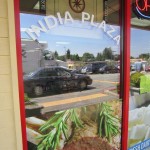Last week, I wrote about the explosion in foreign-born residents in the Northwest. Next I thought it would be interesting to dig a little deeper into the demographics of one of Washington’s most diverse communities: SeaTac.
The South King County city is a mix of 1950s homes with manicured lawns, cul de sacs with a boat in every third driveway, and dense apartment buildings that serve as nuclei for refugees being resettled into this country and family members that follow. According to five-year American Community Survey estimates, 31 percent of its population is now foreign-born.

SeaTac is also remarkable for the sheer diversity of countries that its residents hail from. Unlike some small cities that become magnets for immigrants from a particular country or region, SeaTac’s foreign-born residents are pretty evenly split from around the globe. The ACS breaks down the origins of SeaTac’s foreign born population this way: Europe 8.2%, Asia 24.9%, Africa 27.1%, Oceana 2.2%, Latin America 36.7%. The local library is a microcosm of that diversity: Computers are packed with people taking online English lessons, looking up nursing programs, checking Asian stocks, Facebooking with friends in Addis Ababa, and checking out Bollywood movies.
Although the US Census may not have the capacity to fully count and capture the complexity of immigrant and refugee populations, the limited data does offer some interesting comparisons between SeaTac’s native-born and foreign-born populations. Its estimates show that SeaTac’s foreign-born residents are more likely to be married, more likely to be employed, more likely to have left school before high school and more likely to have a graduate degree, and to make less money. Here are some of the highlights:

(To see a larger version of this chart, click here.)
The difference in employment numbers is probably explained by the fact that SeaTac’s native population has a larger share of retirees. Still, the percentage of unemployed residents in the two populations is about the same (around 3.6 percent), which is pretty remarkable considering that SeaTac is a major city for refugee resettlement and the obstacles they face to attain some modicum of economic stability in this country.
Tom Medina, who oversees the state of Washington’s Office of Refugee and Immigrant Assistance, said people don’t appreciate how many entrepreneurial success stories there are among the refugee population:
The main focus of our services is to get refugee adults who are able to work into jobs in the US. That’s very difficult, especially given the economy…Say you make baskets or pottery for a living and all of a sudden you’ve got eight months to become self-sufficient.* If you drop me in the middle of China and tell me to learn Chinese and find work in eight months, I’d be hard pressed and I have a college education. But refugees have been through the worst things that life can throw at people, yet they’re still on their feet and they recognize that they’re making a new start. They’re very willing and enthusiastic about finding work but the challenges are so daunting. That’s why we try to take advantage of that willingness and enthusiasm before they get jaded.
Foreign-born residents (of which only a fraction are refugees) are almost twice as likely to be employed in the service industry, of which there are many opportunities in SeaTac. The airport itself offers an abundance of relatively low-skill jobs, from cleaning planes to selling magazines to assembling bagels to driving cargo trucks. As do the satellite businesses that surround it, from Park & Fly lots that hire attendants, Hilton hotels that need housekeepers, and taxicabs that need driving.

Across from the new SeaTac light rail station, foreign-born entrepreneurs have colonized the strip malls and retail centers. The Bakara Mall (named after one of the largest open markets in Mogadishu), is a rabbit-like warren of small stalls operated by entrepreneurs selling silk head scarves, exquisite long dresses, cell phones, books, and travel and financial services aimed at the city’s Somali population.
Next door, you can eat Indian buffet fare, taqueria tacos, or a Quiznos sandwich while waiting to get a payday loan. And though the KeyBank parking lot is empty, good luck getting a spot in front of the Al Hidaya grocery store and Islamic bookstore, Have a Nice Day jewelry, the beauty salon offering African hair braiding or the tax accountants that speak Somali or Amharic.

Although only about 1 in 10 of SeaTac’s foreign-born residents does not own a car (more than the native-born population), it’s amazing how many people walk. The main streets are about as inhospitable for pedestrians as you can imagine: devoid of sidewalks, criss-crossed by major connectors that have a gazillion lanes of traffic to cross, flanked by massive parking lots and people turning in and out of driveways. Yet all sorts of people walk: elderly Asian couples wearing fedoras and sunhats, people loaded down with groceries, guys using umbrellas for canes, women pushing strollers with kids hanging on the side.
SeaTac’s foreign-born population is more likely to be located on the extreme ends of the educational spectrum. They’re significantly more likely than their native counterparts to have a less-than-high-school education. They’re also twice as likely to have a graduate degree, an artifact of recruiting programs from the region’s universities, research institutions, and software and engineering companies that bring overseas talent to Puget Sound. It’s a good reminder that the region’s foreign-born population is about the farthest thing from monolithic or homogenous as you can imagine.
*Notes: Eight months is the amount of time that unmarried or married refugees with no minor children receive direct cash assistance, although they are still eligible for job training, language classes, food stamps, and some other benefits. Families with children are eligible for additional assistance through the Temporary Assistance for Needy Families program.


Comments are closed.